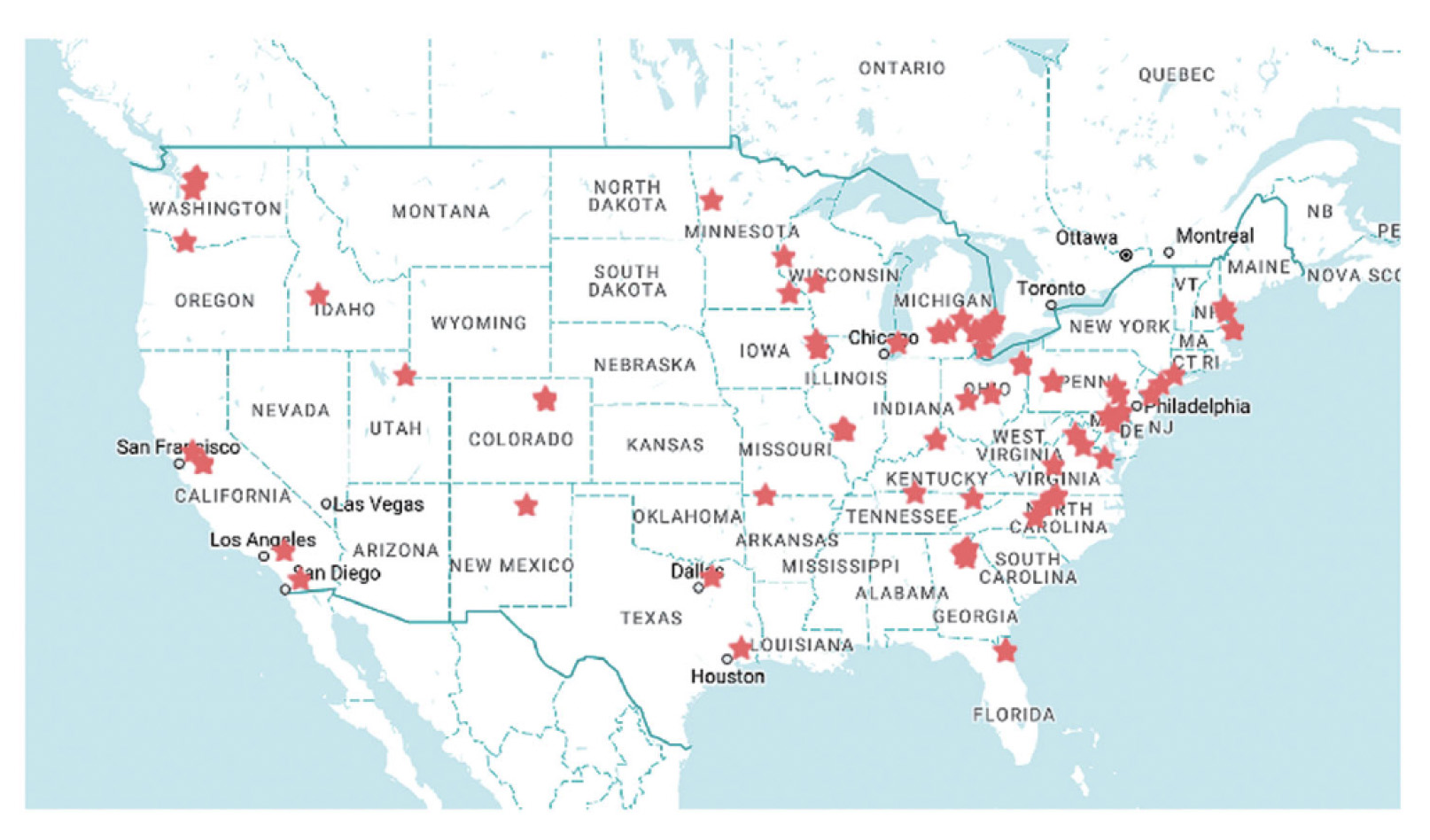Uncovering JAPA
Relationship Potential Between Planning and Immigrant Affairs Departments

Cities across the United States have been experiencing rapid growth of immigrant populations for decades, yet municipal planning departments have been slow to respond. Planners and immigrant affairs departments are not communicating despite their plethora of shared interests, and the two can no longer afford to operate in isolation.
Planners and Immigrants: A Policy Study
In her paper "Welcoming Immigrants: An Agenda for Municipal Planning," (Journal of the American Planning Association, Vol. 88 no. 3), Stacy Anne Harwood studies the extent to which municipal planners are involved in immigrant welcoming initiatives across the United States. She offers recommendations for how planners can more intentionally address immigrant needs and center equity in their practices.
To examine the interchange between planners and immigrant affairs offices, Harwood conducted content analyses of 28 comprehensive plans and 17 immigrant integration plans and interviewed 42 planning and immigrant affairs directors across 30 "welcoming" cities. Welcoming cities assist with economic development, safety, education, and other social services for immigrants, as well as improve the cultural competency of staff to improve relations, service provision, and immigrant engagement.
Immigrant populations are crucial to the economic development of cities and are often involved in land use controversies, but few planning departments are looking into the potential of changing land use regulations to facilitate immigrant integration.
Harwood writes that immigration has largely disappeared from planning practice today, focusing the discipline on place over people, and creating "culturally neutral" spaces. However, immigrants use and occupy space differently than intended in much land use legislation. This often leads to racist or xenophobic complaints initiated by hegemonic identities including white, higher-income, native-born property owners. This ultimately leads to harsh policing of how immigrants use space and infringes on the extent to which immigrants can integrate into a city.

Figure 1: The welcoming cities across the U.S.

Table 1: Examples of land use controversies.
Improving Immigrant Integration: Bridging Planning Divides
In Harwood's 23 interviews with planning directors or senior staff, only one person identified as BIPOC, and six identified as women. Many did not view immigrants as affecting planning or vice versa and generally relied on other offices or non-profits to lead engagement with immigrants rather than hiring representative staff. Harwood also found that planning and zoning rely heavily on centering "equality" rather than "equity," and is focused on improving immigrant compliance with existing regulations rather than changing the regulations.
In her 21 interviews with immigrant affairs directors and staff, more than half identified as BIPOC, and were often immigrants, relatives of immigrants, or identified as women. Harwood found that their integration plans and programming focused on immediate needs and service delivery, and were frequently missing long-term perspectives from municipal planners. These plans also lacked discussion of how codes, regulations, and zoning affect housing, transit, and economic opportunities.
Harwood also notes that the immigrant affairs staff she spoke to did not understand planning and its implications for immigrants, and the biggest points of interaction between immigrant affairs and planning staff entailed translating materials and community engagement.
Harwood's study produced a few key recommendations:
- Look for ways to build flexibility and informality into planning by planning "with immigrants as contributors, not lawbreakers." She provides examples of taking a slow, steady approach to shifting what is considered politically and culturally acceptable by sometimes allowing immigrant communities to use space in alternative ways. She also recommends shifts to form-based codes rather than use-based codes to allow for more flexibility and alternative spatial uses.
- Elevate immigrant voices through increased diversity in planning departments, planning commissions, and improved immigrant outreach and engagement. Planning departments can do internal audits to evaluate where they are exacerbating and perpetuating racial and ethnic inequality internally. Harwood also recommends more effective engagement through partnering with trusted organizations in immigrant communities.
Harwood concludes that planners should recognize the indispensable vibrancy and stability that immigrants contribute to a city. She underscores that to create a welcoming agenda within planning departments, we must center equity over equality to allow for flexibility and nuance in how different identities use and navigate space. Planning and immigrant affairs agencies must become closer allies and establish deeper, consistent relationships to accomplish their shared goals, and the work of improving inclusivity and equity in planning begins with the internal diversity of the planning profession.
Top image: E+ SDI Productions


